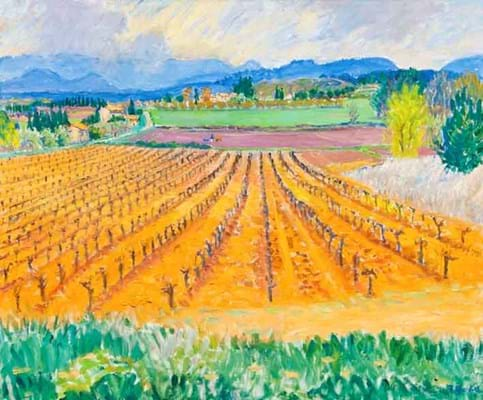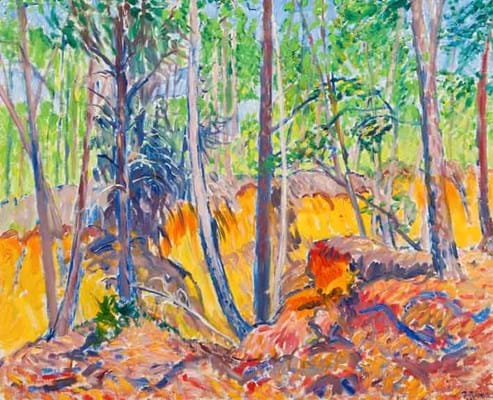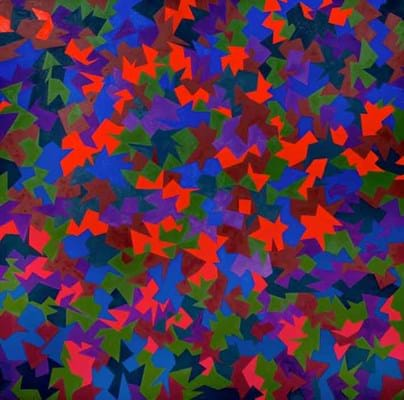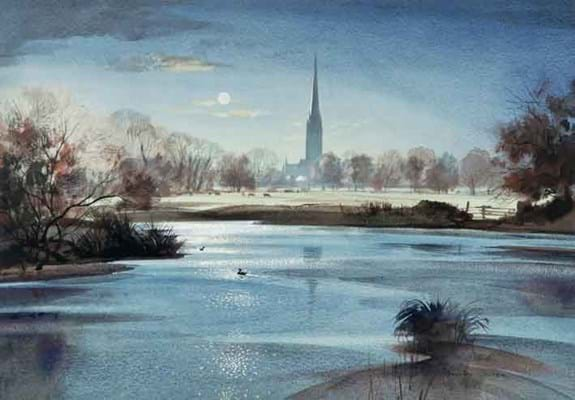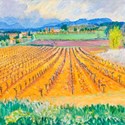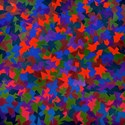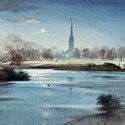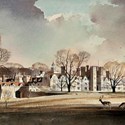While his general approach was simply to sell things that were enjoyable to own (and to cater for all budgets), most people will remember him best for his unceasing promotion of works by living artists.
For around three decades he worked seven days a week, staging more exhibitions than virtually any other dealer and constantly building up strong relationships with both artists and collectors. As art historian David Buckman wrote in his obituary inThe Independent: "Many young artists established a name through Campbell and some older ones found a new outlet."
He began buying art as a hobby in the mid 1970s. With his main job as a sales manager for British Airways, he found time to attend auctions and art fairs, and then later took a stand at the fairs at Alexandra Palace.
Campbell became a full-time dealer in the 1980s and founded the gallery in Kensington which he ran single-handedly for over 25 years, championing Modern British artists such as Harry Weinberger (who he believed was underrated) and members of the White Stag group among many others.
His studio sales were particularly notable and helped revive the reputation of many an artist. In 1993, he somehow managed to accommodate around 500 works by the late Robin Mackertich which, lacking floor space at the gallery, he displayed edge to edge and priced from £2 to £1200. Indeed, throughout his stewardship of the gallery, much of the stock was not hung but kept stacked up or placed in drawers.
Diagnosed with Hodgkin's Lymphoma, Campbell died in February last year aged 68, since when his family have been going through his stock and personal collection, earmarking what to keep and what to sell.
The result was a single-owner sale at Dreweatts/Bloomsbury in London on April 26, when 269 lots from the estate presented a cross-section of what he traded over his career. Pictures and prints formed the main tranche, and there were also a good range of photographs, furniture, ceramics and tribal art.
Familiar Face
Dreweatts/Bloomsbury specialist Robert Hall remembered Campbell as a familiar face when he worked in a gallery in the Kensington area in the 1980s and, at the auction viewing for the sale, former clients and friends of the late dealer rubbed shoulders and exchanged reminiscences.
In the end, a good number of these people, who formed part of his loyal following, bid on the day.
For the most part, the estimates were not excessive and so the final take-up was very high. Overall, 252 lots (94%) got away for a £141,420 hammer total.
Top Lots
Among the older artists whose work Campbell dealt in was Frederick Gore (1913-2009), who provided the top two picture prices at the sale. A teacher and writer, as well as painter, he was the son of Camden Town painter Spencer Gore (1878-1914).
The head of the painting department at St Martin's School of Art for nearly 20 years, Frederick Gore produced a large body of pictures, predominantly landscapes. His views of the French countryside in particular were well exhibited and appearing here was Vineyard Bonnieux, April, a signed 2ft 6in x 3ft (76 x 92cm) oil on canvas depicting a scene in Southern France. It was exhibited at the Royal Academy's Summer Exhibition in 1994 (the artist was chairman of the RA's exhibitions committee from 1976 to 1987).
Estimated at £3000-5000, it was knocked down at £7000 to a trade buyer - a decent sum for one of Gore's numerous richly-coloured views of the Luberon region of Provence.
Also offered with the same estimate was Gore's Ravine, Near Roussillon, Vaucluse, which made the same price from the same buyer. This example was a signed 2ft 3in x 2ft 8in (69 x 81cm) oil on canvas of the same locality, although here there was less use of perspective, with the focus being more on the trees in the foreground.
Among the other artists which the Duncan Campbell gallery promoted and whose works were represented at the sale were Alberto Morrocco (1917-98) and Rowland Hilder (1905-93).
The sole picture by Morrocco, Hillside with Village, Roviano, went unsold against a £20,000-30,000 estimate. This was partly because it was arguably a more difficult picture than his more sought-after still lifes and figurative works, but also because it was one of the lots at the sale that the family found harder to part with and so the reserve was set at a higher level than much of the rest.
Hilder, meanwhile, had as many as 20 works on offer here.
Campbell had been a strong believer in American-born Hilder, seeing him as a distinctive painter of the English landscape despite his being dismissed by art critics on account of his popular style.
Hilder had his first solo exhibition at The Fine Art Society in 1939, and Campbell handled many of his later works, his attention helping the artist to regain public recognition.
Fears that offering so many works at a single auction might prove too much for the market to absorb proved unfounded, with 18 getting away for a total of £20,020.
Two drew particular interest: the signed, 20½in x 2ft 6in (52 x 75cm) watercolour Moonlight over Salisbury Cathedral, which made £3200 against a £800-1200 estimate, and Knole House and Park, a signed 18½in x 2ft 4in (47 x 72cm) watercolour and ink that took £2400 against a £600-800 estimate.
With both pictures having good Wiltshire and Kent subjects respectively, these were above-average prices for the artist at auction and both sold to private buyers.
There were also five works by Berenice Sydney (1944-83) which together represented a series of abstract paintings from 1972-74 using the same motif of summer leaves in different colours.
The artist produced a large body of work despite her sudden death from an asthma attack aged 39, and examples now appear on the secondary market relatively frequently. Working from her studio in Chelsea, she adopted abstract and geometric forms, and such works with exuberant colours make the most money, as was the case here.
Offered separately, these 4ft (1.22m) square oils on canvas all sold to at least two different buyers for a combined £13,900.
In fact, this sale achieved four of the top five auction prices ever recorded for the artist, according to Artnet.
Uppermost among them was Abstract Composition I, which used a strong blue and red palette and took £3500 against a £800-1200 estimate, an auction record for the artist.
Both Abstract Composition II, which used slightly more muted blues, and Abstract Composition III, which used lilac and yellow colours, made £3000 against the same £800-1200 estimates.
For a dealer who spent his working life promoting artists, it seems appropriate that the stock Campbell left behind should still bring yet another name to the market's attention.
The buyer's premium was 22%

